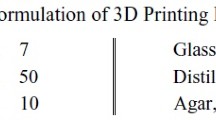Abstract
Ceramic parts possessing an ordered porosity were produced for the first time by powder-based three-dimensional printing of a preceramic polymer followed by pyrolysis in an inert atmosphere. The main parameters involved in the process were investigated, and the precision of the printed and ceramized parts was assessed by means of scanning electron microscopy and micro computed tomography. The influence of two different printing solvents was investigated and the use of a mixture of 1-hexanol and hexylacetate in particular allowed the production of parts with a relative density of 80% both in the polymeric and in the ceramic state. The mixing of a cross-linking catalyst directly with the printing liquid greatly simplified the process, minimizing the necessity of preprocessing the starting powder. Three-dimensional printing of a preceramic polymer not containing any inert or active fillers was proved to be a feasible, convenient and precise process for the production of porous ceramic possessing a complex, ordered structure, such as stretch-dominated lattices.








Similar content being viewed by others
References
P. Colombo, G. Mera, R. Riedel, and G.D. Sorarù: Polymer-derived ceramics: 40 years of research and innovation in advanced ceramics. J. Am. Ceram. Soc. 93(7), 1805 (2010).
P. Colombo, G.D. Sorarù, R. Riedel, and A. Kleebe: Polymer Derived Ceramics. From Nano-structure to Applications (DESTech Publications, Lancaster, PA, 2009). pp. 476.
ASTM F2792-09e1: Standard Terminology for Additive Manufacturing Technologies (ASTM International, 2010).
T. Friedel, N. Travitzky, F. Niebling, M. Scheffler, and P. Greil: Fabrication of polymer derived ceramic parts by selective laser curing. J. Eur. Ceram. Soc. 25, 193 (2005).
M. Mott and J.R.G. Evans: Solid freeforming of silicon carbide by inkjet printing using a polymeric precursor. J. Am. Ceram. Soc. 84(2), 307 (2001).
M. Scheffler, R. Bordia, N. Travitzky, and P. Greil: Development of a rapid crosslinking preceramic polymer system. J. Eur. Ceram. Soc. 25, 175 (2005).
H. Sieber, H. Friedrich, Z. Zeschky, and P. Greil: Light-weight ceramic composites from laminated paper structures. Ceram. Eng. Sci. Proc. 21, 129 (2000).
N. Travitzky, H. Windsheimer, T. Fey, and P. Greil: Preceramic paper-derived ceramics. J. Am. Ceram. Soc. 91(11), 3477 (2008).
P. Cromme, M. Scheffler, and P. Greil: Ceramic tapes from preceramic polymers. Adv. Eng. Mater. 4, 873 (2002).
M.L. Branham, R. Tran-Son-Tay, C. Schoonover, P.S. Davis, S.D. Allen, and W. Shyy: Rapid prototyping of micropatterned substrates using conventional laser printers. J. Mater. Res. 17(7), 1559 (2002).
H. Seyednejad, D. Gawlitta, R. Kuiper, A. de Bruin, C. van Nostrum, T. Vermonden, J.A. Wouter, and W.E. Hennink: In vivo biocompatibility and biodegradation of 3D-printed porous scaffolds based on a hydroxyl-functionalized poly(epsilon-caprolactone). Biomaterials 33(17), 4309 (2012).
C.B. Williams, J.K. Cochran, and D.W. Rosen: Additive manufacturing of metallic cellular materials via three-dimensional printing. Int. J. Adv. Manuf. Technol. 53, 231 (2011).
B. Verlee, T. Dormal, and J. Lecomte-Beckers: Density and porosity control of sintered 316L stainless steel parts produced by additive manufacturing. Powder Metall. 55(4), 260 (2012).
A. Zocca, C.M. Gomes, E. Bernardo, R. Müller, J. Günster, and P. Colombo: LAS glass–ceramic scaffolds by three-dimensional printing. J. Eur. Ceram. Soc. 33, 1525 (2013).
R. Gildenhaar, C. Knabe, C.M. Gomes, U. Linow, A. Houshmand, and G. Berger: Calcium alkaline phosphate scaffolds for bone regeneration 3D fabricated by additive manufacturing. Key Eng. Mater. 432(4), 849 (2012).
U. Gbureck, T. Hölzel, U. Klammert, K. Würzel, F.A. Mueller, and J.E. Barralet: Resorbable dicalcium phosphate bone substitutes prepared by 3d powder printing. Adv. Funct. Mater. 17, 3940 (2007).
R.R. Melcher: Rapid prototyping from ceramics by 3D printing. Ph.D. Thesis, Friedrich-Alexander-Universitaet Erlangen/Nuernberg, 2009. [in German].
C.J. Maxwell: On the calculation of the equilibrium and stiffness of frames. Phil. Mag. 27, 294 (1864).
M.F. Ashby: The properties of foams and lattices. Philos. Trans. R. Soc. London, Ser. A 364, 15 (2006).
R. Harsche, C. Balan, and R. Riedel: Amorphous Si(Al)OC ceramic from polysiloxanes: Bulk ceramic processing, crystallization behavior and applications. J. Eur. Ceram. Soc. 24, 3471 (2004).
H. Hausner: Powder characteristics and their effect on powder processing. Powder Technol. 30(1), 3 (1981).
E. Ionescu, C. Linck, C. Fasel, M. Müller, H.J. Kleebe, and R. Riedel. Polymer-derived SiOC/ZrO2 ceramic nanocomposites with excellent high-temperature stability. J. Am. Ceram. Soc. 93 (1), 241 (2010).
H.D. Akkaş and M.L. Öveçoğlu. Silicon oxycarbide-based composites produced from pyrolysis of polysiloxanes with active Ti filler. J. Eur. Ceram. Soc. 15(26), 3441 (2006).
B.M. Wu and M.J. Cima: Effects of solvent-particle interaction kinetics on microstructure formation during three-dimensional printing. Poly. Eng. Sci. 39(2), (1999).
P. Colombo, E. Bernardo, and G. Parcianello: Multifunctional advanced ceramics from preceramic polymers and nano-sized active fillers. J. Eur. Ceram. 33, 453 (2013).
Author information
Authors and Affiliations
Corresponding author
Rights and permissions
About this article
Cite this article
Zocca, A., Gomes, C.M., Staude, A. et al. SiOC ceramics with ordered porosity by 3D-printing of a preceramic polymer. Journal of Materials Research 28, 2243–2252 (2013). https://doi.org/10.1557/jmr.2013.129
Received:
Accepted:
Published:
Issue Date:
DOI: https://doi.org/10.1557/jmr.2013.129




